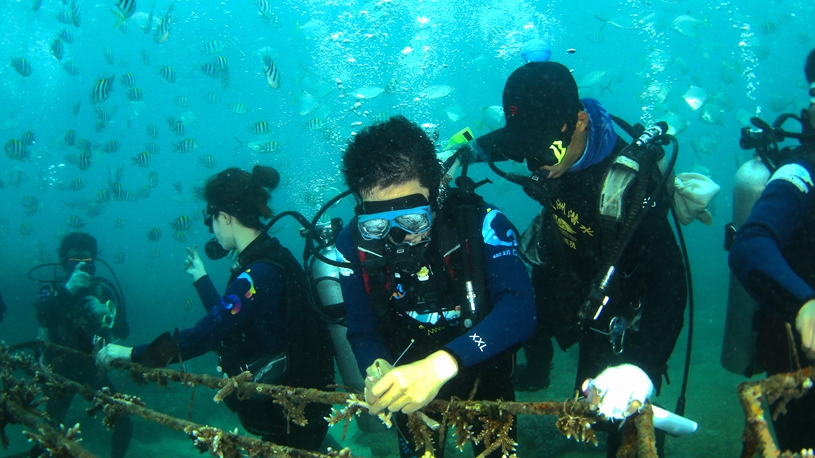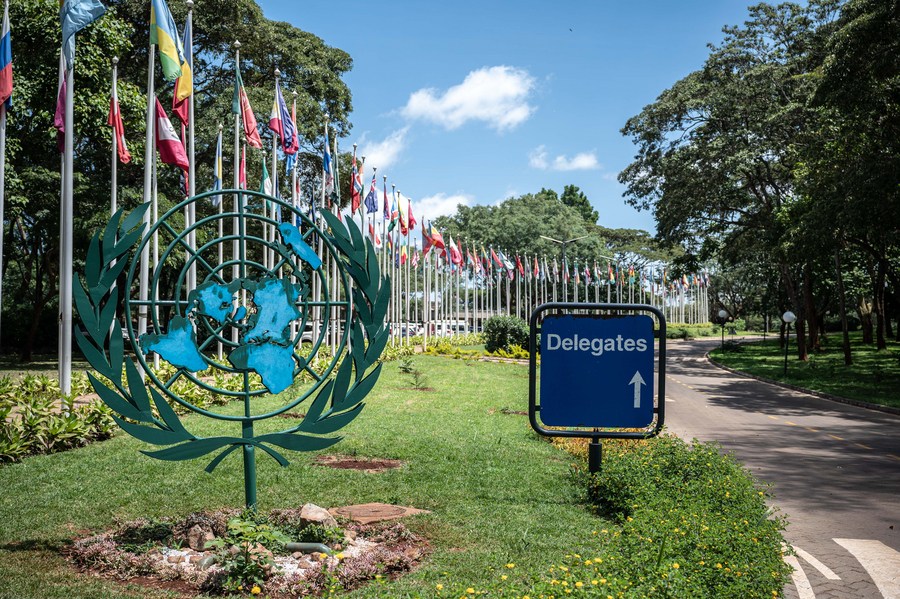
This photo taken on Jan. 31, 2024, shows a view of the United Nations Environment Program (UNEP) headquarters in Nairobi, Kenya. (Xinhua/Wang Guansen)
China has made significant strides in preserving its marine ecosystems for sustainable development in coastal areas, a United Nations Environment Program (UNEP) official has said.
NAIROBI, June 9 (Xinhua) -- China has made significant strides in preserving its marine ecosystems for sustainable development in coastal areas, a United Nations Environment Program (UNEP) official has said.
Leticia Carvalho, who heads the UNEP Marine and Freshwater Branch, said China has prioritized marine ecosystem health, which is critical to the overall stability of oceans that provide a range of benefits, from oxygen to food, jobs and recreation.
"There are efforts to minimize waste entering the marine environment seen through initiatives to reduce sources of pollution at the provincial and municipal levels, including Hainan Province's steps to ban single-use and non-recyclable plastics," Carvalho told Xinhua in an interview.
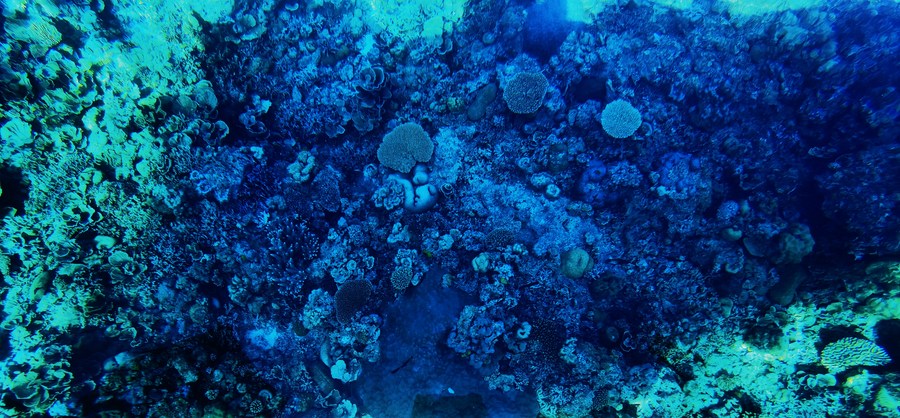 This photo taken on April 27, 2024, shows the creatures in the South China Sea. (Xinhua/Yuan Shuai)
This photo taken on April 27, 2024, shows the creatures in the South China Sea. (Xinhua/Yuan Shuai)
Carvalho identified China's Blue Circle, a marine initiative developed by the Department of Ecology and Environment of Zhejiang province and Zhejiang Lanjing Technology, as the most impactful in marine environment conservation.
"It has collected over 10,700 tonnes of marine debris. Named a UNEP Champion of the Earth in 2023, the Blue Circle initiative is harnessing advanced technology to scale the reuse of recycled marine plastics," she said.
The UNEP official observed that China, in its Biodiversity Conservation Strategy and Action Plan (2023-2030) released a few months ago, has marked marine ecosystems, including estuaries, bays and coastal wetlands, mangroves, coral reefs and seagrass beds as priorities for ecosystem restoration.
According to Carvalho, China's Marine Ecological Red Line, which is part of its Ecological Conservation Red Line policy and is designed to identify and protect crucial ecological zones, is one of the best planning approaches for ecosystem management.
China has also set a target of at least 150,000 square kilometers of marine area for protection by 2030 in its Biodiversity Conservation Strategy and Action Plan (2023-2030).
"By designating areas for protection, countries are working to maintain ocean health and prevent further degradation. The adoption of an integrated coastal zone management (ICZM) approach is a positive step towards ensuring the sustainable development of coastal areas. ICZM is also an example of how society can pursue a harmonious existence between people and nature," she said.
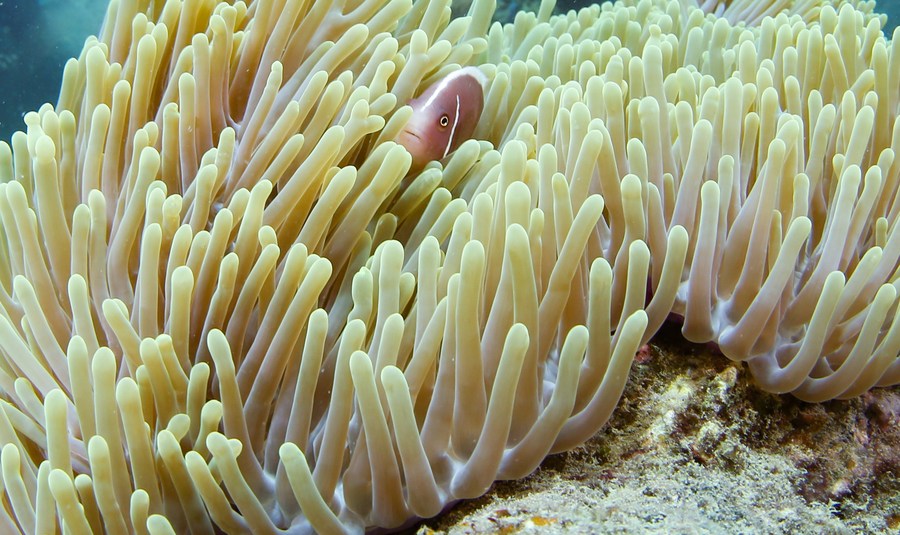
Sea anemones and a clownfish are pictured in the Wuzhizhou Island's marine ranch in Sanya, south China's Hainan Province, May 17, 2024. (Xinhua/Yang Guanyu)
Carvalho observed that the health of coral reefs lies in the nexus between climate change and marine ecosystem protection, as she acknowledged China's efforts in marine ecosystem protection to address challenges posed by global warming on coral reefs.
"Experts have noted the increased synergies in China among policies on climate change response, marine environment protection and biodiversity conservation in recent years. By treating climate change and marine ecosystem protection as intertwined issues, governments are better placed to address these challenges and identify appropriate solutions," she said.
Carvalho observed that China's engagement in international bodies has been crucial for marine ecosystem development and protection at the global and regional levels.
Under China's presidency of the 15th Conference of the Parties to the Convention on Biological Diversity, member states delivered a landmark agreement for people and nature through the Kunming-Montreal Global Biodiversity Framework.
China is one of the nine participating countries in the Coordinating Body on the Seas of East Asia (COBSEA).
Last year, COBSEA countries adopted a Marine and Coastal Ecosystems Framework, which looks at pathways to achieve Kunming-Montreal Global Biodiversity Framework targets.
Carvalho said China is also an active member state of the Northwest Pacific Action Plan (NOWPAP), which works on the protection, management, and development of the region's marine and coastal environment.
"Scientists and practitioners from research and applied institutions throughout China provide valuable contributions to NOWPAP activities, including the development of regional overviews and state of the marine environment reports," she said.
Coral reefs, Carvalho explained, are often mistaken for rocks, but they are not.
"At the heart of each individual coral is a polyp, a clear, tube-shaped animal with a ring of tentacles that it uses to catch prey," she said.
Carvalho explained that some corals surround themselves with a limestone skeleton forged from calcium absorbed from seawater and that corals get their color from thousands of plant-like organisms known as zooxanthellae, which live inside the corals and provide them with food.
"It is a symbiotic relationship that supports at least 25 percent of all marine life," Carvalho said, noting that coral reefs face many local stressors, from mismanagement of wastewater to plastic suffocation, overfishing within reef systems to unsustainable fishing and tourism practices that harm the physical reefs.
There is also the threat of rising sea temperatures, she said.
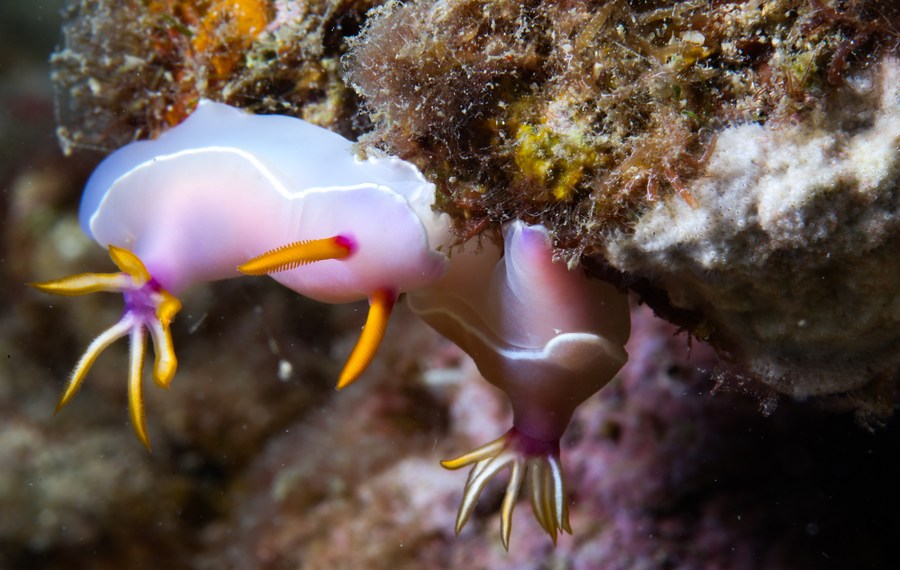
A sea slug is pictured in the Wuzhizhou Island's marine ranch in Sanya, south China's Hainan Province, May 16, 2024. (Xinhua/Yang Guanyu)
The Intergovernmental Panel on Climate Change estimates that global warming of 1.5 degrees Celsius would result in the loss of 70 percent to 90 percent of reefs, and a surge of 2 degrees Celsius would cause the loss of up to 99 percent of reefs.
Reefs support 24 percent of all marine life. Therefore, it is urgent to minimize local threats while working to drastically reduce emissions.
In recent years, governments and international organizations have stepped up efforts to protect corals.
The UNEP-supported Global Funds for Coral Reefs is aiming to channel and leverage up to 3 billion U.S. dollars toward projects that safeguard these underwater cities.
Carvalho said the fund, a partnership between the public and private sectors, and co-chaired by the UNEP and the British government, is designed to support a broader global effort to protect biodiversity while helping coastal communities adapt to a changing climate.
Meanwhile, 45 countries, home to most of the world's corals, have signed a pledge to protect 125,000 square kilometers of reefs, supported by the UN Framework Convention on Climate Change (UNFCCC) High-Level Climate Champions, an effort known as the Coral Reef Breakthrough. ■






